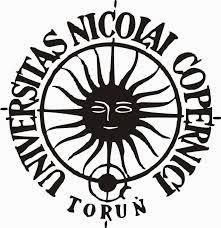 |
| On May 24, 1543, Nicolaus Copernicus died in what is now Frombork, Poland. |
In 1543, European astronomers argued that Earth lay at the center of the universe, the view also held by most ancient philosophers and biblical writers. In addition to correctly theorizing the order of the known planets, including Earth, from the sun, and estimating their orbital periods approximately , Copernicus argued that Earth turned daily on its axis and that gradual shifts of this axis accounted for the changing seasons.
He died in 1543, the day his major work, which was a book titled ,"On The Revolutions of the Celestial Bodies" was published, saving him from the outrage of some religious leaders ,who later condemned his heliocentric view of the universe as heresy. By the late 18th century, the Copernican view of the solar system was almost universally accepted.
 |
| Frombork Cathedral |
Copernicus was reportedly buried in Frombork Cathedral, where archaeologists for over two centuries searched in for his remains. Efforts to locate the remains in 1802, 1909, 1939 and 2004 had not succeeded. In August 2005, however, a team led by Jerzy Gąssowski, head of an archaeology and anthropology institute in Pułtusk, after scanning beneath the cathedral floor, discovered what they believed to be Copernicus' remains.
The find came after a year of searching, and the discovery was announced only after further research, on 3 November 2008. Gąssowski said he was "almost 100 percent sure it is Copernicus". Forensic expert Capt. Dariusz Zajdel of the Polish Police Central Forensic Laboratory used the skull to reconstruct a face that closely resembled the features, including a broken nose and a scar above the left eye. The expert also determined that the skull belonged to a man who had died around age 70 which was Copernicus' age at the time of his death.
The grave was in poor condition, and not all the remains of the skeleton were found; missing, among other things, was the lower jaw. The DNA from the bones found in the grave matched hair samples taken from a book owned by Copernicus which was kept at the library of the University of Uppsala in Sweden.
 |
| Capt. Dariusz Zajdel's reconstruction of Copernicus' face. |
The grave was in poor condition, and not all the remains of the skeleton were found; missing, among other things, was the lower jaw. The DNA from the bones found in the grave matched hair samples taken from a book owned by Copernicus which was kept at the library of the University of Uppsala in Sweden.
 |
| University of Uppsala crest. |









